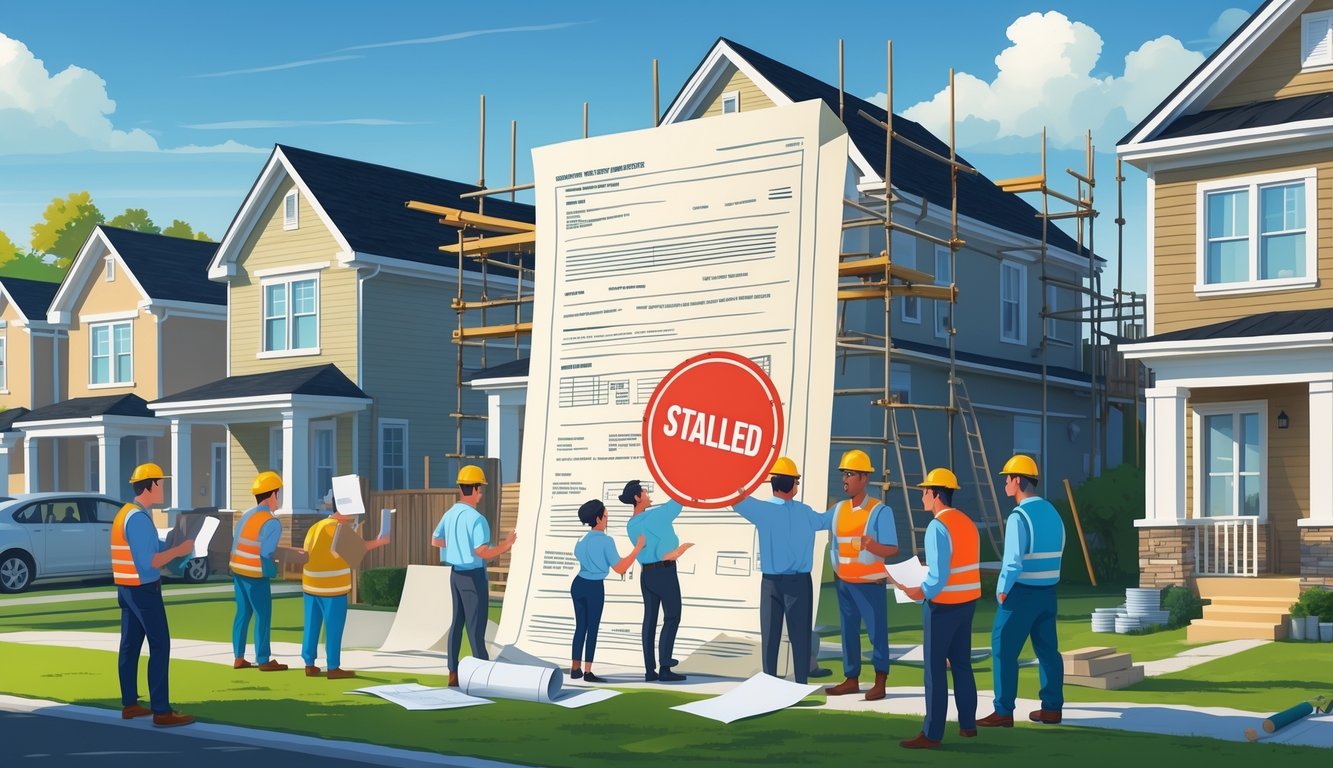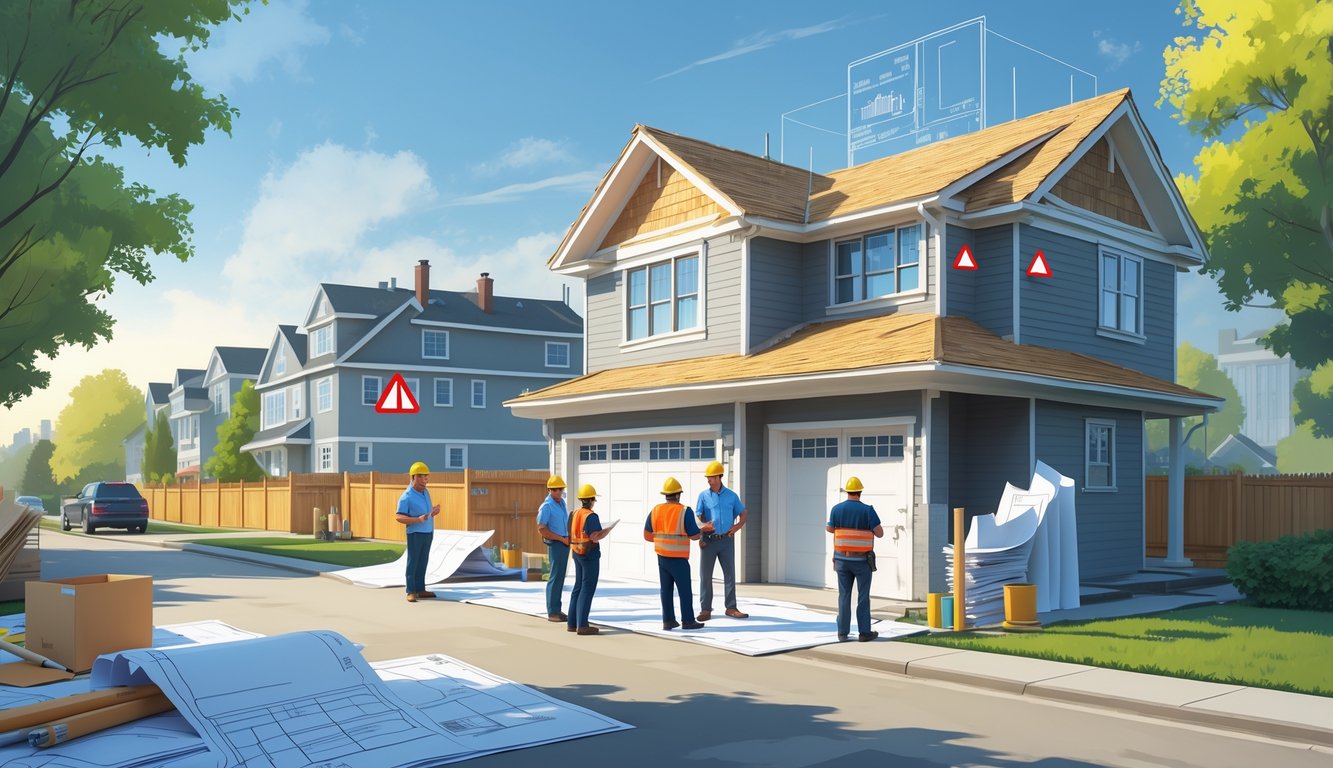
So, here’s me, thinking I’m just patching drywall, nothing wild, and suddenly—bam—city inspection nightmares. Not a word from the guy at the hardware store, either. Apparently, there’s this whole underworld of hidden permit rules that almost no one talks about, and they’re just waiting to mess up your project. That staircase I keep tripping over? Not even the real problem. Why does tossing up a sunroom turn into a bureaucratic black hole because of some ancient ordinance no one’s seen since the ‘80s? Permit rules, buried in local codes like they’re national secrets, can freeze even the simplest home addition for weeks. Maybe months. I’ve wasted so many evenings doomscrolling contractor forums, thinking I’d spot a warning sign—nope. City field cards? Useless. I mean, look at what builders actually say; they’re just as lost.
Met this old-timer, thirty years in the business, and he’s still getting smacked with random permit fees for stuff like swapping a window. There’s this line you hear: “Most cities require: completing a permit application”—sure, but then you get blindsided by some retroactive penalty because a home inspector decided to play detective. Does anyone at city hall actually read their own rules? Because they sure don’t explain them. Retroactive permits, field cards, whatever—feels like they’re making it up as they go, and you don’t find out until you’re already drowning in paperwork. And nope, this isn’t just my town. Go down the permit confusion rabbit hole if you think I’m exaggerating.
And sometimes it’s not even your mistake. Some previous owner’s weird garage conversion? Suddenly it’s your wallet on the hook. I can’t count how many times I’ve stood in the permit office, explaining it’s not my addition, and they just stare at me. Some pros say, “Just walk away,” but unless you’re into surprise bills and endless city hall meetings, you’ve got to learn to read the fine print. Or at least guess who’s hiding it.
Understanding Hidden Permit Rules

Ever stared at a pile of foundation plans and felt your brain melt? That’s me, drywall dust in my hair, everything on pause because some permit rule just popped out of nowhere. You’d think red tape would be obvious, but nah, it’s like playing hide-and-seek with the city’s codebook. Zoning maps, building codes, amendments from 2007—good luck. The stuff you don’t see coming always nukes your timeline.
What Makes Permit Rules ‘Hidden’
Permit nightmares never show up where you expect. Sheds? Sure. But a kitchen backsplash? Had a builder tell me he got busted for a fireplace insert—straight off the shelf at a big-box store—because it broke some ancient code. City inspectors had let it slide before, but suddenly it’s a problem.
Do permit offices post these rules? Ha. Most of it’s buried in handbooks nobody reads. Some city planner only wants files in .PDF, not .JPG, so your soil report vanishes. Try moving HVAC? Hope you didn’t touch a brick near a landmark—zoning laws in some districts will flag you instantly, even if the last addition skated by. Projects stall because a neighbor files a noise complaint, and suddenly you’re dealing with three new agencies.
The city’s online portal? Don’t trust it. Half the codes change mid-meeting and never get posted. I email zoning, and they send back a memo from 2011. I mean, how do you plan around that? You don’t. You just hope.
Commonly Overlooked Requirements
I’ve seen more projects die over parking minimums than illegal plumbing. It’s embarrassing. You splurge on countertops, forget a second parking spot, and—boom—no sign-off. Permit guides say “mandatory setbacks” change block by block, so your addition’s fine here but illegal next door.
Attic conversions? Don’t even. Around here, you need an engineer to say your beams can hold a twin bed. The rule only matters if the inspector cares that day, and the city docs never mention your “bonus room” needs egress windows. Learned that the hard way. Unpermitted additions can mess up your future sale if the lender catches it—lenders are brutal about “legally permitted square footage.” Smoke detectors not hardwired? One of the top reasons for failed fire inspections, but it’s not on half the checklists. By the time I noticed, I’d lost three weeks and paid for another inspection. Fantastic.
How Permit Challenges Stall Home Additions
You think you’re just finishing a home project, then—wham—permit roadblock. Suddenly, contractors, homeowners, even the neighbor who keeps peeking over your fence, everyone’s stuck. The permit process? It’s a slow-motion trainwreck.
Unexpected Delays During Construction
Nothing derails a build like the council “losing” your permit for the third time. I know an architect who submits everything online, triple copies, but the planning department still wants paper. Why? No clue.
Internal review panels? They don’t work like the rest of us. I watched a crew pour a foundation, then get hit with a letter: “roof pitch exceeds allowed percentage.” Needed a new drawing. Government guidance says dormer windows mean new restrictions if neighbors complain—even if the eaves line up perfectly. Add in “planning consultations” and budgets just burn.
Permitted development rights look generous on paper, but the reality is a maze. No one knows why. Janet at the council? Always out. I keep seeing “minor” projects turn into six-month sagas waiting for one stamp.
Impact on Project Timelines
So, you’ve got trades lined up, scaffolding blocking your driveway, builder says it’ll be fine. Nope. One permit delay and the whole thing collapses. People forget that “permitted development” doesn’t mean “fast.” Local rules say you can do a two-storey extension, but in reality? You’re stuck.
Your permit bounces from planning to the environment officer, who wants a bird survey—even though you’re just building a wardrobe. Work stops. Timelines go haywire, you reschedule everyone, costs balloon, and sometimes, after doing everything “right,” you’re still staring at a half-built addition six months later.
Honestly, the only way to keep things moving is to basically camp at the permit office, bribe with biscuits, and beg for updates. The real timeline for a home addition isn’t about building; it’s about surviving permit limbo. I’ve seen kitchens sit in storage for months because the review board adjourned for a gardening class. True story.